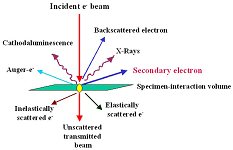
Asia Pacific Academy of Science Pte. Ltd. (APACSCI) specializes in international journal publishing. APACSCI adopts the open access publishing model and provides an important communication bridge for academic groups whose interest fields include engineering, technology, medicine, computer, mathematics, agriculture and forestry, and environment.

A novel method for glucose detection using dual-modal carbon dots for colorimetric and ratiometric fluorescence analysis
Vol 5, Issue 1, 2024
Download PDF
Abstract
Iron-based nitrogen co-doped carbon dots (Fe, N-CDs) were synthesized from taro leaf biomass via a hydrothermal process using ammonium ferric sulfate dodecahydrate and urea. The synthesized Fe, N-CDs exhibited peroxidase-like activity and strong fluorescence at 450 nm. A dual-mode colorimetric/ratiometric fluorescence assay for hydrogen peroxide (H2O2) detection was developed using Fe, N-CDs and o-phenylenediamine (OPD) as probes. In the presence of H2O2, OPD was oxidized to 2,3-diaminophenazine (DAP), which is yellow and absorbs at 420 nm. Under 360 nm excitation, DAP emits fluorescence at 550 nm and quenches the fluorescence of Fe, N-CDs at 450 nm due to the internal fluorescence filtering effect. This enables the quantitative analysis of H2O2 using the absorbance at 420 nm (A420) and the fluorescence intensity ratio of DAP to Fe, N-CDs (I550/I450). Since glucose oxidase can convert glucose to H2O2, the assay was extended to glucose determination. At pH 5.4, 40 ℃, with 1.75 mmol/L OPD and a 25-minute reaction time, the method showed a linear relationship between the A420 and I550/I450 values and glucose concentration in the range of 1.0~100 μmol/L, with detection limits of 0.8 μmol/L (colorimetry) and 0.6 μmol/L (ratiometry). The method was validated for glucose detection in human serum.
Keywords
References
- Zhang J, Dai X, Song ZL, et al. One-pot enzyme- and indicator-free colorimetric sensing of glucose based on MnO2 nano- oxidizer. Sensors and Actuators B: Chemical. 2020; 304: 127304. doi: 10.1016/j.snb.2019.127304
- Baek SH, Roh J, Park CY, et al. Cu-nanoflower decorated gold nanoparticles-graphene oxide nanofiber as electrochemical biosensor for glucose detection. Materials Science and Engineering: C. 2020; 107: 110273. doi: 10.1016/j.msec.2019.110273
- Xie WQ, Gong YX, Yu KX. Rapid quantitative detection of glucose content in glucose injection by reaction headspace gas chromatography. J. Chromatogr. A. 2017; 1520143 -1520146.
- Ling Z, Xu P, Zhong Z, et al. Sensitive determination of glucose in Dulbecco’s modified Eagle medium by high -performance liquid chromatography with 1-phenyl-3-methyl-5-pyrazolone derivatization: application to gluconeogenesis studies. Biomedical Chromatography. 2015; 30(4): 601 -605. doi: 10.1002/bmc.3589
- Huang HP, Yue YF, Xu L, et al. Glucose Biosensor Based on Dy 2(MoO4)3-AuNPs Composite Nanomaterial†. Chem. J. Chinese Universities. 2017; 38(4): 554-560.
- Xu L, Lin YQ, Chen X, et al. Electrodeposition of Platinum Nanoparticles on MgAl-layered Double Hydroxide Modified Indium Tin Oxide Electrode for Electrochemical Glucose Biosensor†. Chem. J. Chinese Universities. 2016; 37(3): 442 -447.
- Liu T, Zhang S, Liu W, et al. Smartphone based platform for ratiometric fluorometric and colorimetric determination H 2O2 and glucose. Sensors and Actuators B: Chemical. 2020; 305: 127524. doi: 10.1016/j.snb.2019.127524
- Rashtbari S, Dehghan G, Amini M. An ultrasensitive label-free colorimetric biosensor for the detection of glucose based on glucose oxidase-like activity of nanolayered manganese-calcium oxide. Analytica Chimica Acta. 2020; 1110: 98 -108. doi: 10.1016/j.aca.2020.03.021
- Cheng X, Huang L, Yang X, et al. Rational design of a stable peroxidase mimic for colorimetric detection of H 2O2 and glucose: A synergistic CeO2/Zeolite Y nanocomposite. Journal of Colloid and Interface Science. 2019; 535: 425 -435. doi: 10.1016/j.jcis.2018.09.101
- Lin T, Zhong L, Guo L, et al. Seeing diabetes: visual detection of glucose based on the intrinsic peroxidase -like activity of MoS2 nanosheets. Nanoscale. 2014; 6(20): 11856 -11862. doi: 10.1039/c4nr03393k
- Liu H, Hua Y, Cai Y, et al. Mineralizing gold-silver bimetals into hemin-melamine matrix: A nanocomposite nanozyme for visual colorimetric analysis of H2O2 and glucose. Analytica Chimica Acta. 2019; 1092: 57 -65. doi: 10.1016/j.aca.2019.09.025
- Yuan J, Cen Y, Kong XJ, et al. MnO2-Nanosheet-Modified Upconversion Nanosystem for Sensitive Turn-On Fluorescence Detection of H2O2and Glucose in Blood. ACS Applied Materials & Interfaces. 2015; 7(19): 10548-10555. doi: 10.1021/acsami.5b02188
- Wang HB, Chen Y, Li N, et al. A fluorescent glucose bioassay based on the hydrogen peroxide-induced decomposition of a quencher system composed of MnO2 nanosheets and copper nanoclusters. Microchimica Acta. 2016; 184(2): 515 -523. doi: 10.1007/s00604-016-2045-7
- Xiao N, Liu SG, Mo S, et al. B,N-carbon dots-based ratiometric fluorescent and colorimetric dual-readout sensor for H2O2 and H2O2-involved metabolites detection using ZnFe2O4 magnetic microspheres as peroxidase mimics. Sensors and Actuators B: Chemical. 2018; 273: 1735 -1743. doi: 10.1016/j.snb.2018.07.097
- Zhang W, Li X, Xu X, et al. Pd nanoparticle-decorated graphitic C3N4nanosheets with bifunctional peroxidase mimicking and ON–OFF fluorescence enable naked-eye and fluorescent dual-readout sensing of glucose. Journal of Materials Chemistry B. 2019; 7(2): 233-239. doi: 10.1039/c8tb02110d
- Wang C, Tan R, Li L, et al. Dual-modal Colorimetric and Fluorometric Method for Glucose Detection Using MnO2 Sheets and Carbon Quantum Dots. Chemical Research in Chinese Universities. 2019; 35(5): 767 -774. doi: 10.1007/s40242-019- 9130-5
- Zhong QM, Huang XH, Qin QM, et al. Determination of Glucose Based on Carbon Quantum Dots as Peroxidase Mimetic Enzyme. Chinese J. Anal. Chem. 2018; 46(7): 1062 -1068.
- Geng X, Sun Y, Li Z, et al. Retrosynthesis of Tunable Fluorescent Carbon Dots for Precise Long‐Term Mitochondrial Tracking. Small. 2019; 15(48). doi: 10.1002/smll.201901517
- Guo S, Sun Y, Geng X, et al. Intrinsic lysosomal targeting fluorescent carbon dots with ultrastability for long-term lysosome imaging. Journal of Materials Chemistry B. 2020; 8(4): 736 -742. doi: 10.1039/c9tb02043h
- Chen Y, Qin X, Yuan C, et al. Double responsive analysis of carbaryl pesticide based on carbon quantum dots and Au nanoparticles. Dyes and Pigments. 2020; 181: 108529. doi: 10.1016/j.dyepig.2020.108529
- Su A, Wang D, Shu X, et al. Synthesis of Fluorescent Carbon Quantum Dots from Dried Lemon Peel for Determination of Carmine in Drinks. Chemical Research in Chinese Universities. 2018; 34(2): 164 -168. doi: 10.1007/s40242-018-7286-z
- Yuan C, Qin X, Xu Y, et al. High sensitivity detection of H 2O2 and glucose based on carbon quantum dots-catalyzed 3,3′,5,5′-tetramethylbenzidine oxidation. Microchemical Journal. 2020; 159: 105365. doi: 10.1016/j.microc.2020.105365
- Yadav PK, Singh VK, Chandra S, et al. Green Synthesis of Fluorescent Carbon Quantum Dots from Azadirachta indica Leaves and Their Peroxidase-Mimetic Activity for the Detection of H 2O2 and Ascorbic Acid in Common Fresh Fruits. ACS Biomaterials Science & Engineering. 2018; 5(2): 623 -632. doi: 10.1021/acsbiomaterials.8b01528
- Chandra S, Singh VK, Yadav PK, et al. Mustard seeds derived fluorescent carbon quantum dots and their peroxidase -like activity for colorimetric detection of H 2O2 and ascorbic acid in a real sample. Analytica Chimica Acta. 2019; 1054: 145 -156. doi: 10.1016/j.aca.2018.12.024
- Wang L, Liu Y, Yang Z, et al. A ratiometric fluorescence and colorimetric dual-mode assay for H2O2 and xanthine based on Fe, N co-doped carbon dots. Dyes and Pigments. 2020; 180: 108486. doi: 10.1016/j.dyepig.2020.108486
- Zhuo S, Guan Y, Li H, et al. Facile fabrication of fluorescent Fe-doped carbon quantum dots for dopamine sensing and bioimaging application. The Analyst. 2019; 144(2): 656 -662. doi: 10.1039/c8an01741g
- Hu Y, Zhang L, Li X, et al. Green Preparation of S and N Co-Doped Carbon Dots from Water Chestnut and Onion as Well as Their Use as an Off–On Fluorescent Probe for the Quantification and Imaging of Coenzyme A. ACS Sustainable Chemistry & Engineering. 2017; 5(6): 4992 -5000. doi: 10.1021/acssuschemeng.7b00393
- Sun X, He J, Yang S, et al. Green synthesis of carbon dots originated from Lycii Fructus for effective fluorescent sensing of ferric ion and multicolor cell imaging. Journal of Photochemistry and Photobiology B: Biology. 2017; 175: 219 -225. doi: 10.1016/j.jphotobiol.2017.08.035
- Shen J, Shang S, Chen X, et al. Facile synthesis of fluorescence carbon dots from sweet potato for Fe 3+ sensing and cell imaging. Materials Science and Engineering: C. 2017; 76: 856 -864. doi: 10.1016/j.msec.2017.03.178
- Gu D, Shang S, Yu Q, et al. Green synthesis of nitrogen-doped carbon dots from lotus root for Hg(II) ions detection and cell imaging. Applied Surface Science. 2016; 390: 38 -42. doi: 10.1016/j.apsusc.2016.08.012
- Wen X, Shi L, Wen G, et al. Green synthesis of carbon nanodots from cotton for multicolor imaging, patterning, and sensing. Sensors and Actuators B: Chemical. 2015; 221: 769 -776. doi: 10.1016/j.snb.2015.07.019
- Yang W, Huang T, Zhao M, et al. High peroxidase-like activity of iron and nitrogen co-doped carbon dots and its application in immunosorbent assay. Talanta. 2017; 164: 1 -6. doi: 10.1016/j.talanta.2016.10.099
- Fang A, Long Q, Wu Q, et al. Upconversion nanosensor for sensitive fluorescence detection of Sudan I –IV based on inner filter effect. Talanta. 2016; 148: 129-134. doi: 10.1016/j.talanta.2015.10.048
- Qian P, Qin Y, Lyu Y, et al. A hierarchical cobalt/carbon nanotube hybrid nanocomplex -based ratiometric fluorescent nanosensor for ultrasensitive detection of hydrogen peroxide and glucose in human serum. Analytical and Bioanalytical Chemistry. 2019; 411(8): 1517-1524. doi: 10.1007/s00216-019-01573-z
- Xing Z, Tian J, Asiri AM, et al. Two-dimensional hybrid mesoporous Fe2O3-graphene nanostructures: A highly active and reusable peroxidase mimetic toward rapid, highly sensitive optical detection of glucose. Biosensors and Bioelectronics. 2014; 52: 452-457. doi: 10.1016/j.bios.2013.09.029
Supporting Agencies
Copyright (c) 2024 Chunling Yuan, Xiaotiao Yao, Yuanjin Xu, Xiu Qin, Rui Shi, Shiqi Cheng, Yilin Wang

This work is licensed under a Creative Commons Attribution 4.0 International License.

This site is licensed under a Creative Commons Attribution 4.0 International License (CC BY 4.0).
1.jpg)
Prof. Sivanesan Subramanian
Anna University, India





.jpg)
